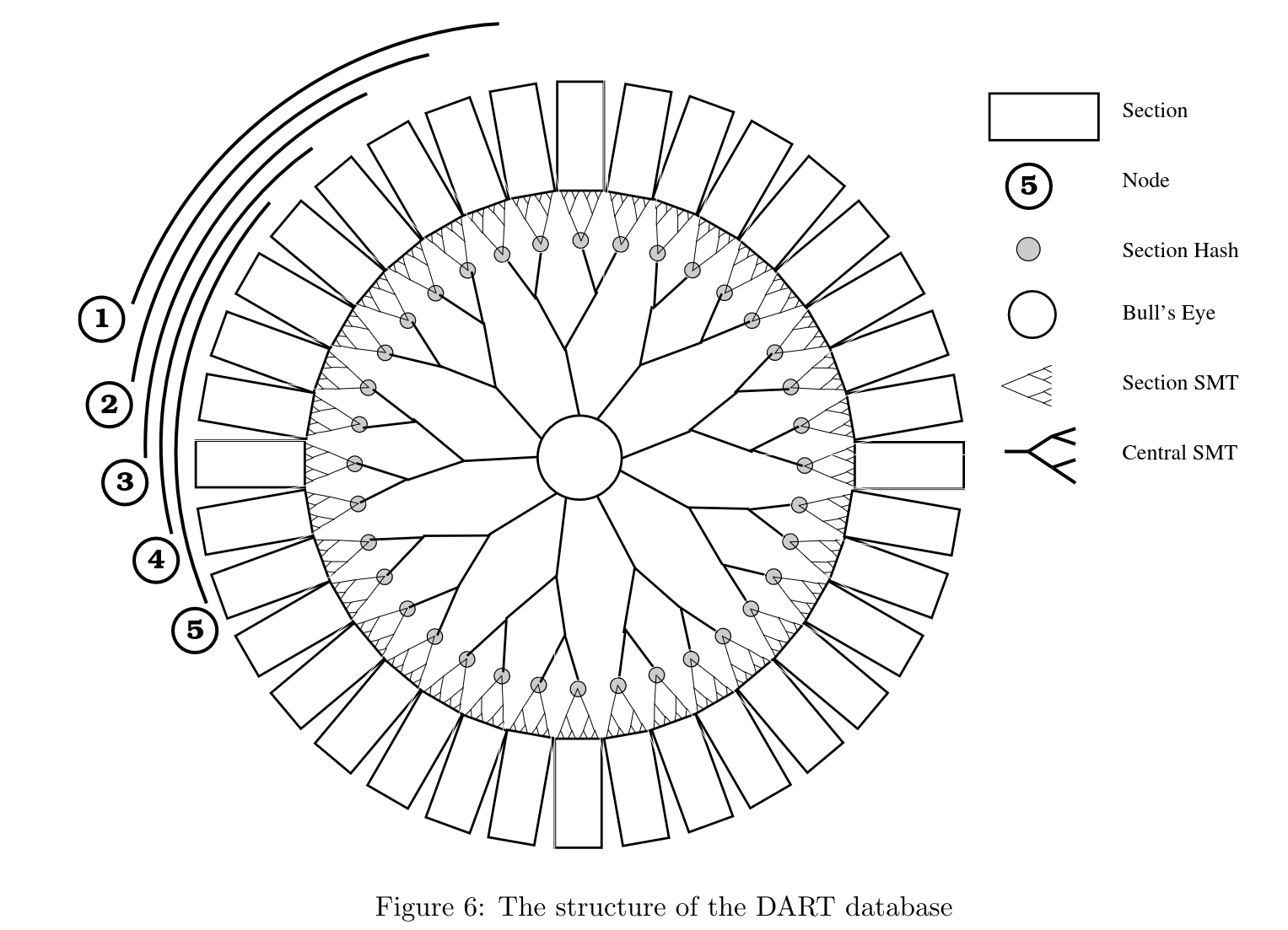DART Service
General structure of the DART modules
DARTFile structure

CRUD
This service is responsible for executing data-base instruction and read/write to the physical file system.
Note.
The DART does not support update only add and delete.
The DART database support 4 DART(crud) commands.
dartBullseyereturns the bullseye (Merkle root) of the DART.dartRimreads a list of branch(tree) for a given rim.dartReadreads a list of archives from a list of fingerprints.dartModifyadds and deletes a list of archives form a Recorder.
The dartModify should only be executed inside a Node, either from the transcript or when the nodes starts up in the DART sync process.
The read-only dart command DART(ro) is defined as dartBullseye, dartRim and dartRead.
All archives in the database has a unique hash-value called fingerprint.
Input:
- Recorder is received from the Transcript Service.
- Undo-instruction is received from the Transcript Service.
- Recorder rewind is received from the Replicator Service.
Request:
- DART(ro) commands from the Node Interface) Service.
Output:
- Last Recoder is sent to the Replicator Service.
DART Start up
When a node goes online the DART needs to be synchronized with other nodes in the network. Before the DART should be synchronized the node should run trough the discovery of the trusted network (This process is not described here)
The DART database should be synchronized before the DART can be used as a consensus database.
DART start-up flowchart:
Note. The synchronization method can be found in DART. SynchronizationFiber which also support HiPRC. For sample code see the unittest in the DART module. DART also includes a journal-files which can be used in case of a crash.
DART Operation
When the DART success-fully has reached the current bullseye state then the DART is ready to receive Recorders from the transcript service. That will keep the DART in the consensus state as long as the network produces Epochs and Recorders.
In the case that an Epoch do not have majority voting on the last bullseye, then the Transcript Service sends a DART undo command to the DART services. This means that the previous Recorder must be undo and this is done by requesting the Recorder from the Replicator and the Recorder is reversed by the dartModify command.
The bullseye after the Recorder has been executed is written into the next Epoch to ensure the consensus state of the database. In other words, a database state is first final in the next consensus round if all the network participants have agreed on the state. That is the last valid consensus database state, consensus bullseye, in the network.
The acceptance criteria specification can be found in DART Service